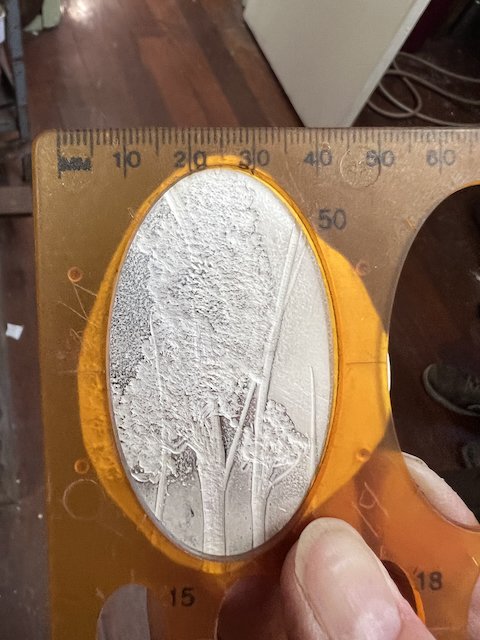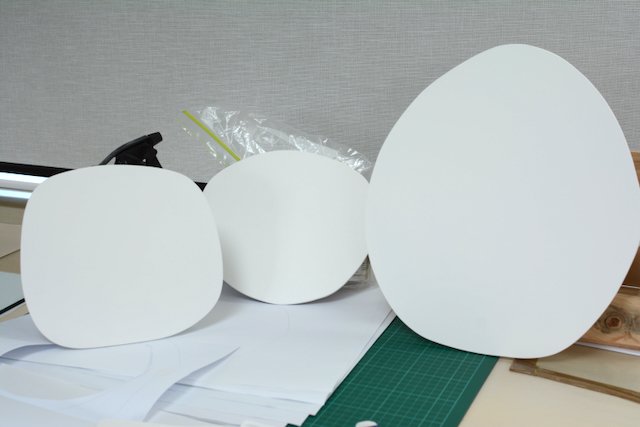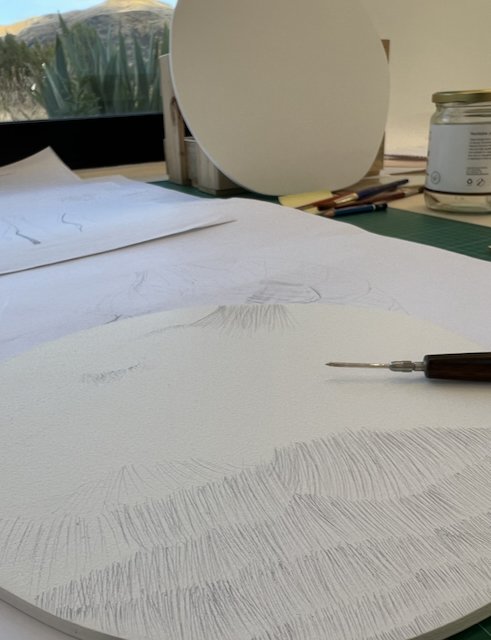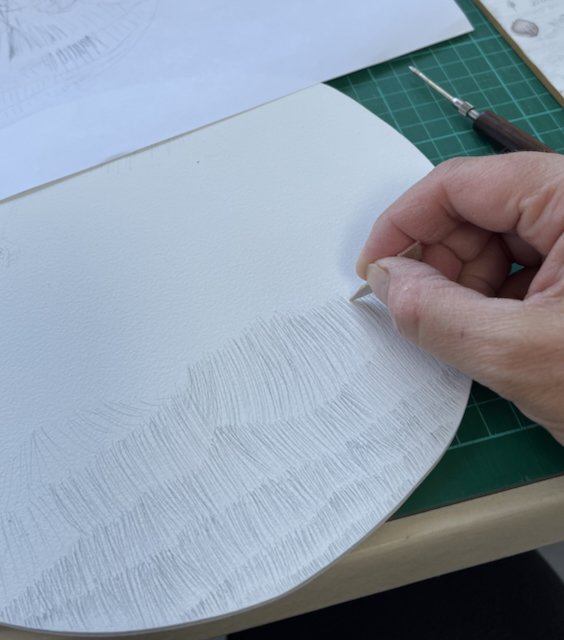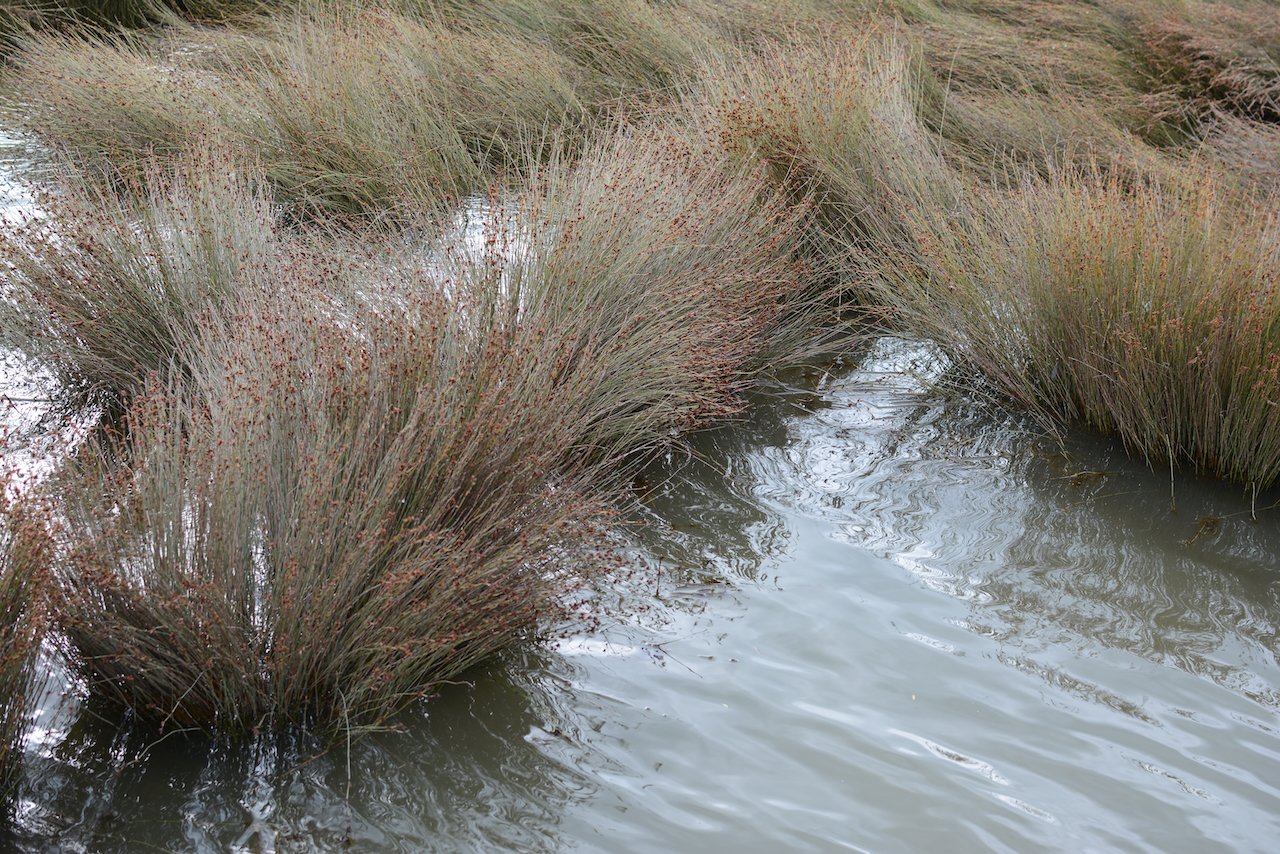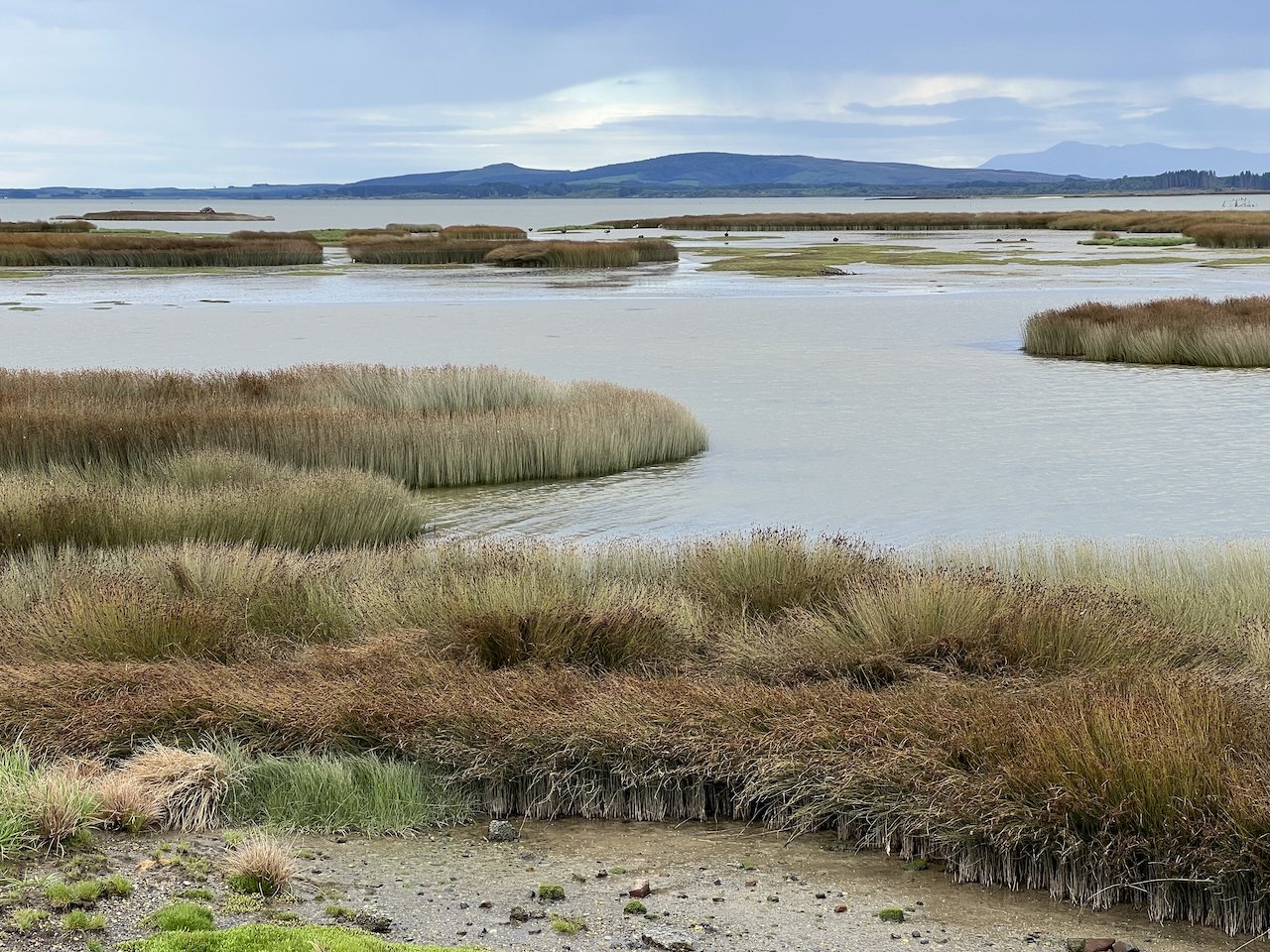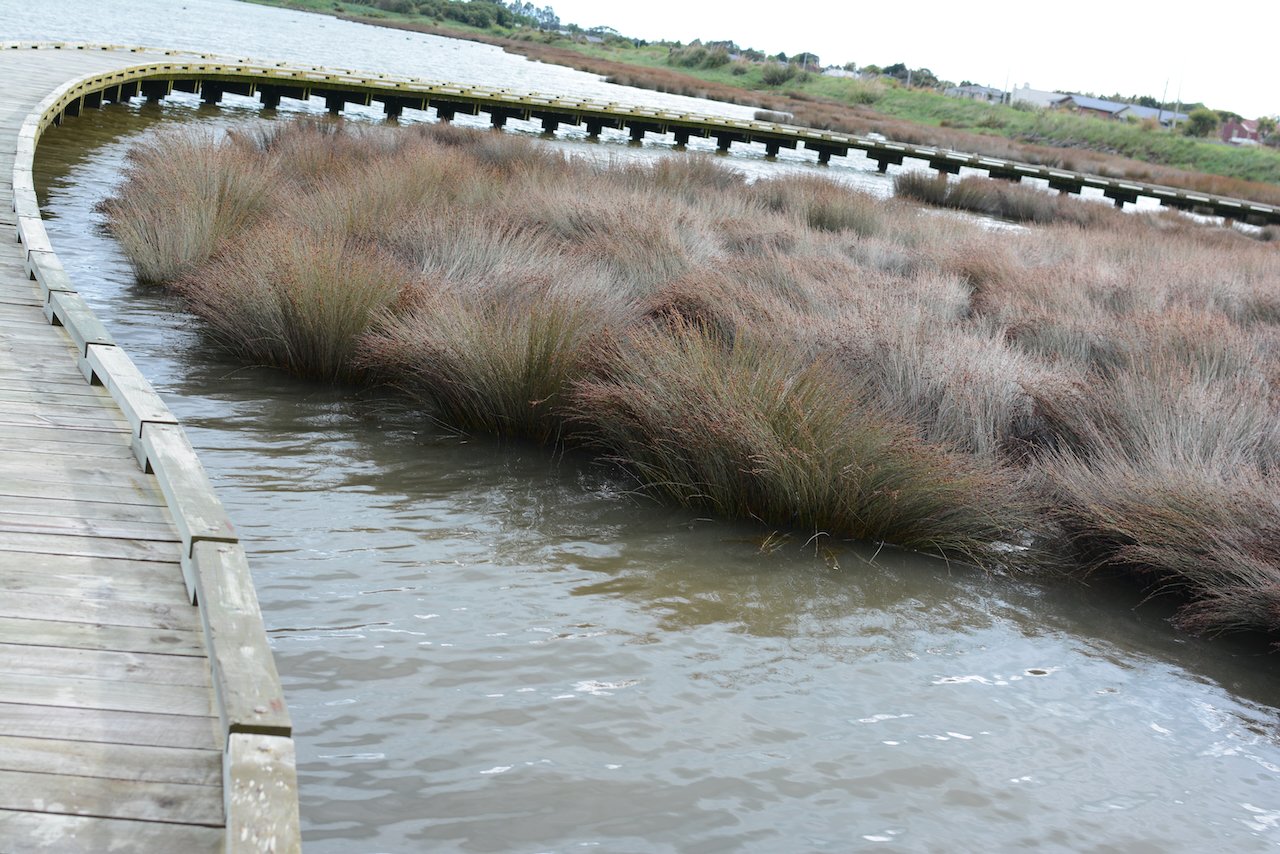Last year, in the time leading up to starting the fellowship, I spent weeks doing a bit of active research about the techniques and disciplines I would like to include in my work, including some jewellery making. In the early 2000s I was travelling, and with only a backpack, I carried very small copper plates and a few tools. The bigger centres in Europe and Canada were pretty amazing in terms of having open access print studios you could join up to for a small fee and an induction on the workshop practice. This resulted in some tiny mezzotint plates (a size I still enjoy using today) which are quite jewellery-like in their appearance, with the copper being so shiny. I’ve sat on this idea for years and still hope to work with small print sized plates and the cross over with jewellery. A jeweller friend Frances Stachl gifted me a beautiful sheet of 99.9% pure silver to try out my ideas - last decade I might add! It seems so precious, I’ll have to bite the bullet and use it someday!
Anyway, I digress, this desire to work with metal is still bubbling around in the background, but I did get to have some brilliant sessions late last year with David McLeod who is a wonderful jeweller and teacher. David and I melted down some granular silver bullion - he wielded the torch, heating the silver to a glowing cadmium red molten blob. It was cooled and run through the jewellery mill with a piece of wiwi rush from a boggy area of Invercargill/Waihōpai. I’ll post a picture of the resulting debossing being sized up in an oval template. This requires so many specialised tools and skills that it will have to be a long term project, but I really enjoyed seeing the result and think it has lots of potential.
Cutting that oval silver to shape has left me with pieces of almost pure silver plate and still an interest in the often overlooked wetland plants. This prompted me to explore silverpoint - another technique that I have played with in the past. Using these offcuts and a long 99.9% silver drawing scribe, I worked onto specially prepared silverpoint boards. This technique was used by artists in the Renaissance, prior to graphite, as a means of drawing. It is possible to do this with many metals, copper, brass, lead and they will tarnish over time to different colours - silver will soften to a warm brownish colour. I’m excited to see the evolution of the drawings which will be included in the show, I love the idea that they have a life after production and will slowly transform. They’re off being framed by the awesome Lauren Redican, the organic shape of her frames makes my heart sing.
Invercargill City Libraries and Archives, Ref: A0001 S00100031_c, Map of Invercargill 1861 - showing Waikiwi Bush, Waihopai Bush (Turakitewaru bush), Seaward Bush (Ōtātrewa Bush) and Otatara Bush. The Kōreti Estuary is still open, later being significantly reclaimed.
